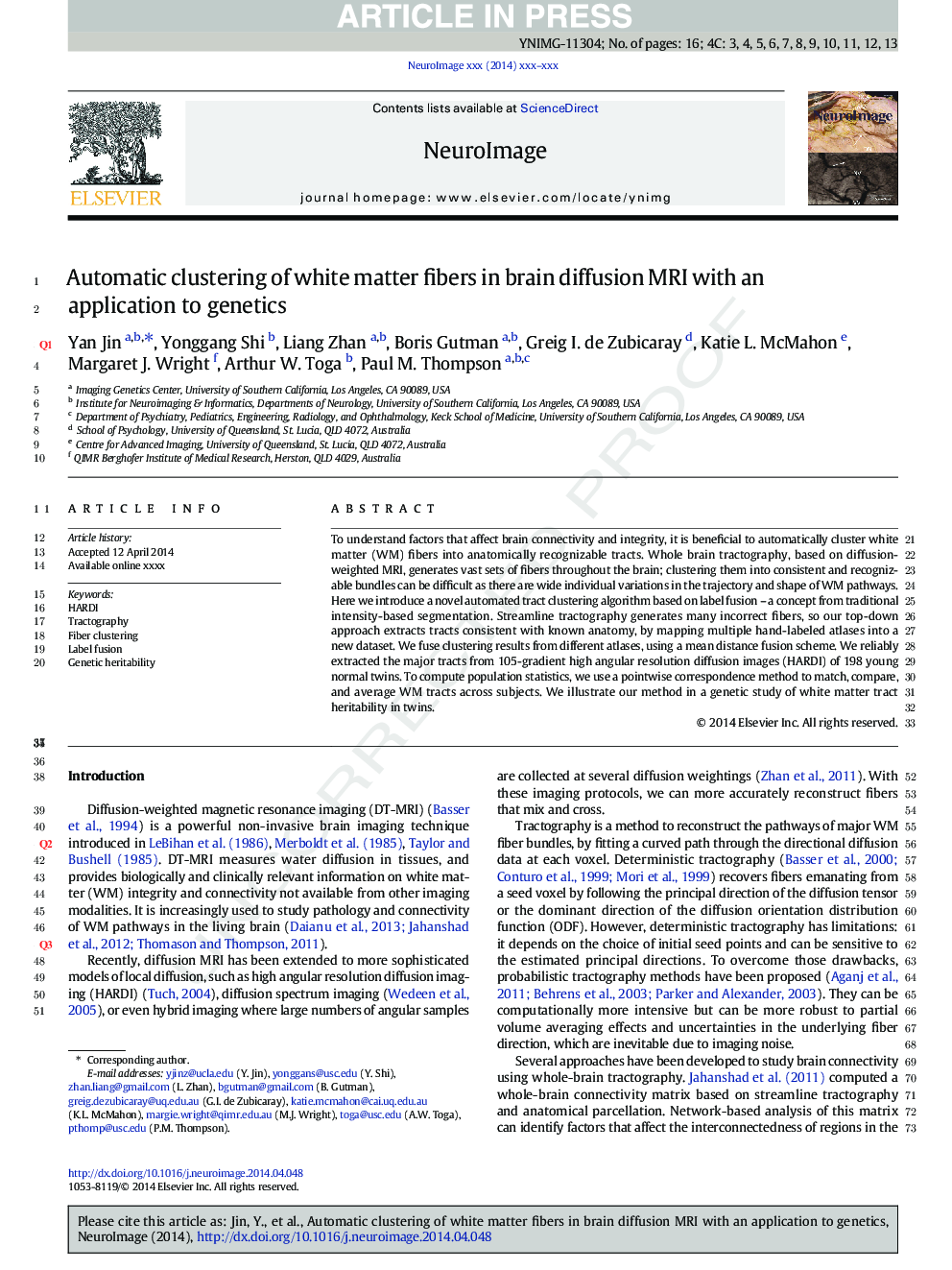| Article ID | Journal | Published Year | Pages | File Type |
|---|---|---|---|---|
| 6026746 | NeuroImage | 2014 | 16 Pages |
Abstract
To understand factors that affect brain connectivity and integrity, it is beneficial to automatically cluster white matter (WM) fibers into anatomically recognizable tracts. Whole brain tractography, based on diffusion-weighted MRI, generates vast sets of fibers throughout the brain; clustering them into consistent and recognizable bundles can be difficult as there are wide individual variations in the trajectory and shape of WM pathways. Here we introduce a novel automated tract clustering algorithm based on label fusion - a concept from traditional intensity-based segmentation. Streamline tractography generates many incorrect fibers, so our top-down approach extracts tracts consistent with known anatomy, by mapping multiple hand-labeled atlases into a new dataset. We fuse clustering results from different atlases, using a mean distance fusion scheme. We reliably extracted the major tracts from 105-gradient high angular resolution diffusion images (HARDI) of 198 young normal twins. To compute population statistics, we use a pointwise correspondence method to match, compare, and average WM tracts across subjects. We illustrate our method in a genetic study of white matter tract heritability in twins.
Related Topics
Life Sciences
Neuroscience
Cognitive Neuroscience
Authors
Yan Jin, Yonggang Shi, Liang Zhan, Boris A. Gutman, Greig I. de Zubicaray, Katie L. McMahon, Margaret J. Wright, Arthur W. Toga, Paul M. Thompson,
